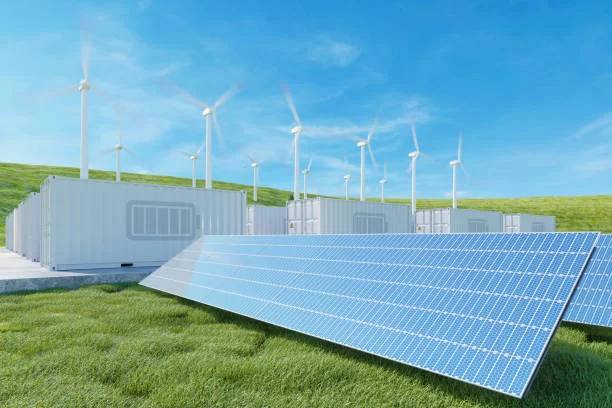Unraveling the Solar Container: Working Principles and the New Energy Horizon
In the contemporary energy landscape, the solar container has emerged as a significant and evolving innovation, gradually shaping the future of energy supply and utilization.
The current development status of the solar container is a subject of considerable interest and holds crucial insights into the potential it holds for the global energy sector. Currently, on a global scale, the market for solar container generators has witnessed substantial growth and expansion. In 2023, the market value reached an impressive 211 million yuan. This upward trajectory is projected to persist, with forecasts indicating a continued steady increase. By 2029, it is anticipated to reach a remarkable 333 million yuan, representing a compound annual growth rate of 8.02%.

When delving into the product types, solar containers come in a diverse range to meet various power demands. Categories such as 40 – 80 kWh, 80 – 150 kWh, below 40 kWh, and above 150 kWh offer flexibility and customization based on specific application requirements. The application scope of these containers is extensive and diverse. In the residential sector, they provide an independent and sustainable power solution for off-grid or energy-efficient homes. In commercial settings, they can power shopping complexes, offices, and data centers, reducing reliance on the grid and ensuring uninterrupted operations. Industrial facilities, such as factories and manufacturing plants, benefit from solar containers for their energy-intensive processes. Government entities also utilize them for critical infrastructure, emergency response systems, and remote installations.
Geographically, different regions present distinct development patterns. In North America, a combination of advanced technological infrastructure and a growing emphasis on renewable energy has led to a significant uptake of solar containers. Europe, with its strong commitment to environmental goals and sustainable development, has seen a rising demand in both urban and rural areas. The Asia-Pacific region, characterized by rapid industrialization and urbanization, is experiencing a burgeoning interest in solar containers to meet the escalating energy needs. In emerging markets across Africa, South America, and parts of Asia, the exploration and application of solar containers are gaining momentum. These regions are increasingly recognizing the potential of this technology to bridge the energy gap and drive economic growth.
In the manufacturing domain, a cadre of prominent enterprises has emerged as key players. These companies are investing heavily in research and development to enhance the performance and reliability of solar containers. Some are concentrating on improving the conversion efficiency of solar panels through advanced materials and manufacturing techniques. This not only boosts the energy generation capacity but also reduces the physical footprint of the panels, making them more suitable for integration within the confines of a container. Others are focused on enhancing the energy storage capacity and longevity of batteries. The development of high-capacity lithium-ion or other advanced battery chemistries is enabling solar containers to store more energy and deliver it over extended periods, even in the absence of sunlight. Additionally, efforts are underway to optimize the control systems that manage the power flow, ensuring seamless integration with the grid or standalone operation.
However, despite the notable progress and promising prospects, the solar container industry is not without its challenges. One of the primary hurdles is the relatively high initial investment cost. The expense associated with procuring high-quality solar panels, efficient inverters, reliable batteries, and a robust container structure can be prohibitive for some potential users, especially in regions with limited financial resources or less developed energy markets. Another significant concern is the need for continuous improvement in battery life and performance. Batteries are a critical component of solar containers, and their lifespan and efficiency directly impact the overall reliability and cost-effectiveness of the system. Ongoing research is focused on developing batteries with longer cycle lives, faster charging capabilities, and better energy retention. The complexity of logistics and installation in certain geographical areas also poses obstacles. Transporting large and heavy solar containers to remote or difficult-to-access locations can present logistical nightmares. Additionally, the installation process often requires skilled technicians and specialized equipment, which may not be readily available in all regions.
Nonetheless, the overall outlook for the solar container industry remains highly optimistic. With increasing global awareness of energy conservation and environmental protection, the demand for clean, sustainable, and decentralized energy solutions is on the rise. As technological advancements continue to drive down costs and improve performance, solar containers are expected to become more accessible and competitive. Moreover, supportive policies and incentives from governments worldwide are likely to further accelerate their adoption. The integration of smart grid technologies and energy storage systems is set to enhance the functionality and value proposition of solar containers, making them an integral part of the evolving energy ecosystem.
In conclusion, as we navigate through the complex and dynamic energy landscape of the 21st century, the solar container stands out as a beacon of hope and possibility. Its working principles, combined with the current state of development and the vast potential for future growth, position it as a key driver in the global transition towards a more sustainable, resilient, and clean energy future. The challenges faced are merely stepping stones on the path to innovation and improvement, and with collective efforts from all stakeholders, the solar container is poised to transform the way we generate, store, and consume energy.
